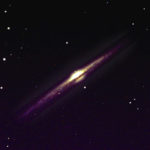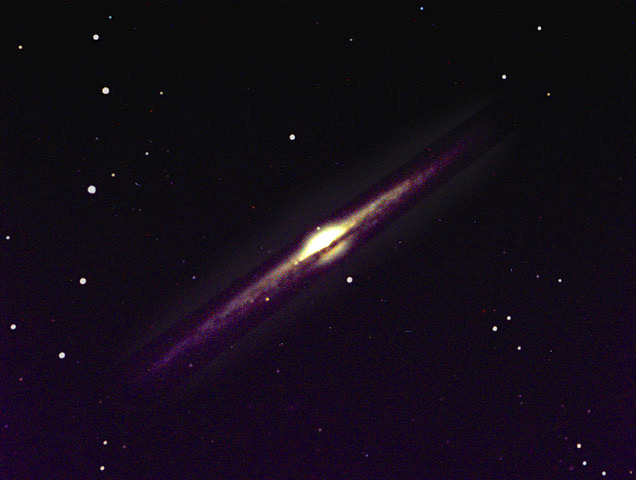MOST RECENT ASTRO NEWS FROM EPMO AND BEYOND: SEE ALL POSTS
March 29, 2025 Open House EVAS Lecture – NASA’s Next Great Observatory by Dr. Laura Coyle
The Estes Valley Astronomical Society (EVAS) is offering a free public lecture on Saturday, March 29th, at the Estes Park Memorial Observatory. EVAS’s goal is to promote amateur astronomy and education in the Estes Valley. The Habitable Worlds Observatory is a large infrared/optical/ultraviolet space telescope recommended by the National Academies’ Pathways to Discovery in Astronomy and Astrophysics for the 2020s. HWO is a concept for … Continue reading →
See all posts from our Astro News…
MOST RECENT ASTROPHOTOGRAPHY : SEE ALL MEMBER PHOTOS
See all photos from our Astrophotography…
Recommended Astronomy Links
- Astronomy Picture of the Day
Features a different image or photograph of our universe each day, along with a brief explanation written by a professional astronomer.
- Tonight’s Clear Sky Clock for Rocky Mountain National Park
It’s the astronomers forecast. It shows at a glance when, in the next 48 hours, we might expect clear and dark skies for one specific observing site. There are many, but the example above is for Blackfoot (the most sponsored chart).
- Hubble Space Telescope Images
Picture Album. Hubble’s Top Shots. A collection of Hubble images selected by Hubble scientists and you. - Howard C. Anderson’s Messier Marathon Photos
East Valley Astronomy Club to attempt to photograph all 110 objects in one night based on Charles Messier who was an 18th century French astronomer who was looking for comets. - NASA
NASA.gov brings you the latest news, images and videos from America’s space agency, pioneering the future in space exploration, scientific discovery and more! - Top Astronomy NASA Photos Of All Time
A list of the most interesting moments in the history of NASA! - Skymaps.com
Quality sky maps (star charts) for skywatchers, educators and publishers. The Evening Sky Map (PDF) free each month. Find constellations, planets, and comets. - SpaceWeather.com
Forecasts of solar flares and geomagnetic storms, plus daily animations of the sun. - SolarPower.Guide
A Student’s Guide to Solar and Lunar Eclipses. - Top 25 Public Observatories
a list of the top 25 public observatories in the United States, organized by state. There may not be an observatory in your backyard, but a little bit of travel can be more than worth your while. So pick an observatory close to you, wait for nightfall, and enjoy the view! - Be an Astronomer Right from Your Window!
Many interesting articles and links specific to beginning astronomy. This is a fantastic site for those looking to get started in the hobby. It’s a must read that covers many aspects of astronomy and it’s even good for the Not-So-Beginner astronomers. - Beginners guide to Astronomy, really great for kids too!
Many aspiring astronomers start out at home, in their own backyard. It is possible to observe quite a lot about our solar system using basic telescopes or even the naked eye. - Guide to Backyard Astronomy!
Mankind has been fascinated by what lays beyond the stars since long before we can recall, astronomy is becoming one of America’s favorite pastimes. Formerly the sole reserve of scientists and science fiction enthusiasts, more and more of us are discovering the pleasures of planet spotting and stargazing. - Backyard Astronomy A Guide for Homeowners and Families
This is a resource for homeowners and their families who want to stargaze in their backyards. Creating a better stargazing environment in your own backyard can be easier than you think. Within this guide, we’ve included ways to create home observatories, reduce light pollution, apps and games for kids to help them get started with astronomy, - 44 Closest Stars and How They Compare to Our Sun Stars have captivated the imagination of humanity since the dawn of our existence. We know that the closest star to Earth is the sun, but what about the stars beyond our solar system? This info-graphic explores the 44 closest stars to us, examining the size, luminosity, constellations, systems, and potential planets of each star.
- The 88 Constellations and Their Brightest Stars
In contemporary astronomy, 88 constellations are recognized by the International Astronomical Union (IAU). Each constellation is a region of the sky, bordered by arcs of right ascension and declination. Together they cover the entire celestial sphere, with their boundaries adopted officially by the International Astronomical Union in 1928 and published in 1930.


